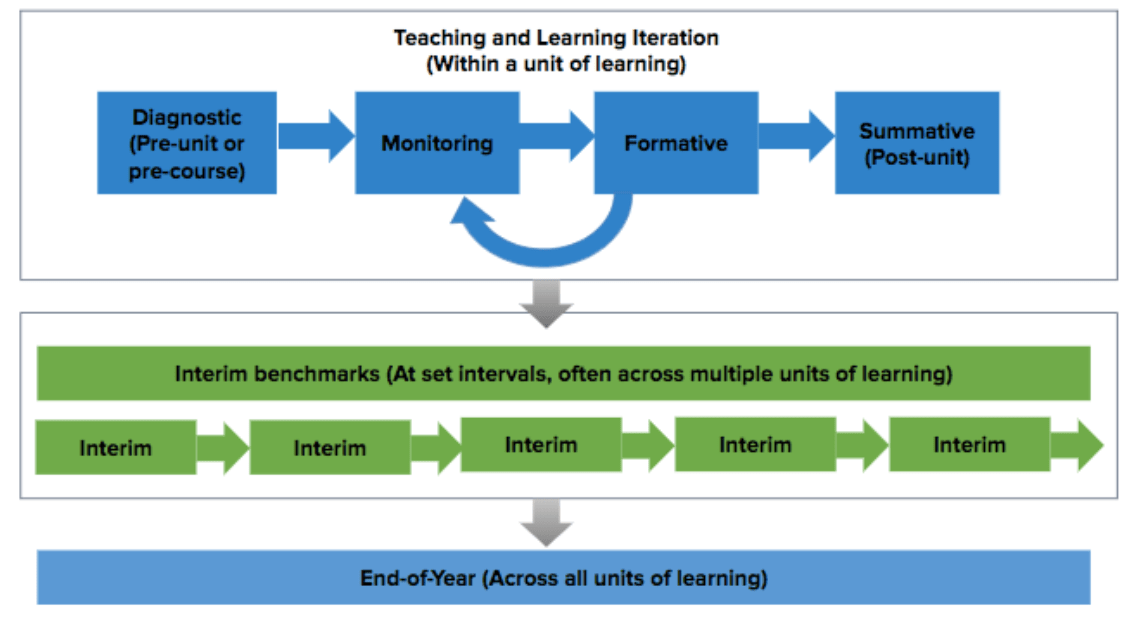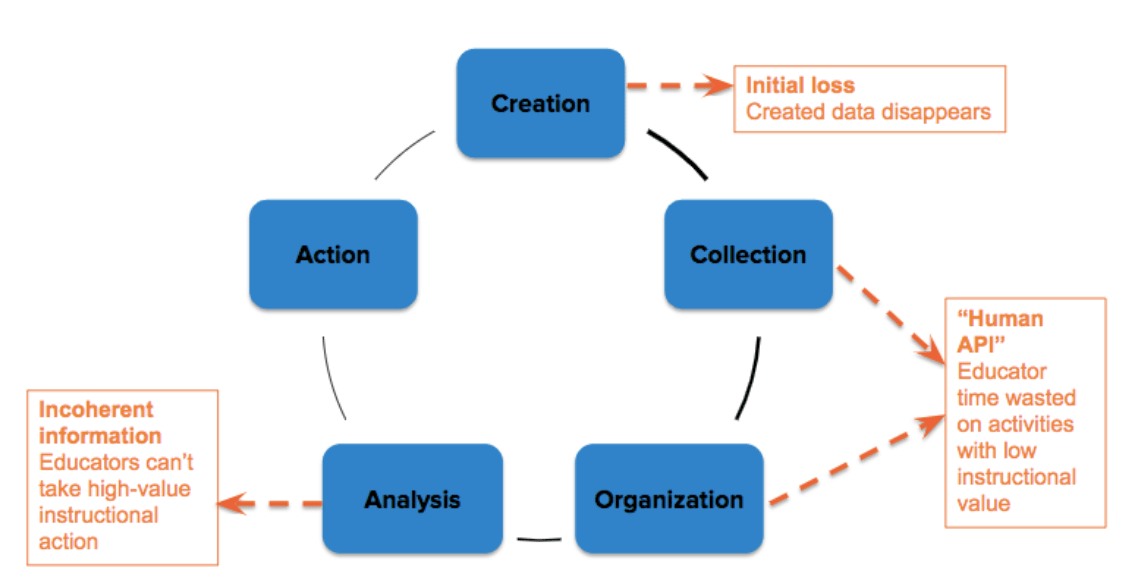How to navigate a wealth of student data: Making assessment cycles and data work for you
June 18, 2019 |
June 18, 2019 |
 When we talk about teachers and the use of classroom data, we’re often talking about data produced via assessment – “the systematic collection and analysis of information to improve student learning (Stassen).” This word can conjure a lot of things for a lot of people, ranging from the high-stakes world of accountability tests to a student’s own reflections on the quality of work they’re producing. When teachers, students, and families use data to make learning more effective, they navigate a whole constellation of assessment types to understand progress against goals and make choices on a day-to-day basis.
When we talk about teachers and the use of classroom data, we’re often talking about data produced via assessment – “the systematic collection and analysis of information to improve student learning (Stassen).” This word can conjure a lot of things for a lot of people, ranging from the high-stakes world of accountability tests to a student’s own reflections on the quality of work they’re producing. When teachers, students, and families use data to make learning more effective, they navigate a whole constellation of assessment types to understand progress against goals and make choices on a day-to-day basis.
This constellation is even more complex in today’s blended-learning classrooms, where online learning programs can capture and record more data on students’ performance. While item banks make creating assessments quicker and easier for teachers, and online tools allow more to be done with data than ever before, there can be a downside: sometimes these data can be hard to access, difficult to understand, or conflicting.
In our research at The Learning Accelerator (TLA), we’ve observed how blended-learning teachers navigate the wealth of student data produced in assessment cycles across multiple formats, ranging from computer-produced activities or brief written tasks to multiple-choice or authentic demonstration tasks. Every piece of data answers distinct questions for practitioners and learners.
In this post, we’ll share concrete examples from practice and advice for effective data use.
When and why different types of assessment are used to inform instruction
How these assessments come together in a classroom
TLA has found that great teachers embed various assessments throughout the learning cycle, iteratively and transparently, to triangulate progress from emerging data and connect learning to instructional actions. The chart below shows how assessments can work together to help educators make good decisions to support student learning.

Making the data work to support classroom instruction
Data-driven educators work in a cyclical manner. Based on what they know about students and the instructional objectives, they develop a plan, implement it, and then analyze data to understand whether or not objectives were achieved and to identify a series of actions to take next. However, hidden within this seemingly straightforward planning and analysis process is a pretty complex set of data actions:
Each of these steps has different levels of value and difficulty. As educators move through the process and get closer to being able to look at the data (ideally in partnership with students), the potential value of the effort they put in increases. Efforts to support data-driven instruction should, therefore, focus on maximizing the time teachers have in the analysis and action phases to understand progress and plan activities. Unfortunately, though not surprisingly, teachers are usually asked to spend most of their time on lower level tasks, and important data gets “lost” along the way.

Minimizing fatigue around data
Given the many data sets that teachers have access to, especially when leveraging edtech tools, it is important to have a clear sense of what the data provide insight into. Teachers are often given support to analyze and assess different data reports but aren’t typically given the tools they need to become data literate. If we want to reduce fatigue and want teachers to make the best instructional decisions for their students, we must intentionally build their capacity.
Questions for teachers to think about when looking at any student data to drive instruction may include:
Data can be a powerful tool in the hands of teachers. By engaging with data in an intentional way, educators can focus on providing personalized supports which will help solve challenges in their classrooms and enhance learning for their students.
Nithi Thomas is an Associate Partner at The Learning Accelerator.
June 18, 2019 at 6:20 pm, Jerry said:
This is such a great write-up!!
June 26, 2019 at 12:53 pm, Sandra Hollaway said:
Thank you for making the daunting work of managing data logical, simplified, and efficient.